Rare Singer 1911A1 from WW2
Walk In Wednesdays are back!
Hey guys, and welcome to another Walk In Wednesday. Actually, it's been a long time since I did Walk in Wednesday, because we had so many collections to look at. But today is special and I just want you to take a quick look at a Singer. This actually did walk in the door, and today is Wednesday, so I thought it would be appropriate to bring it to you.
We actually did a video on two-and-a-half Singers Last Year
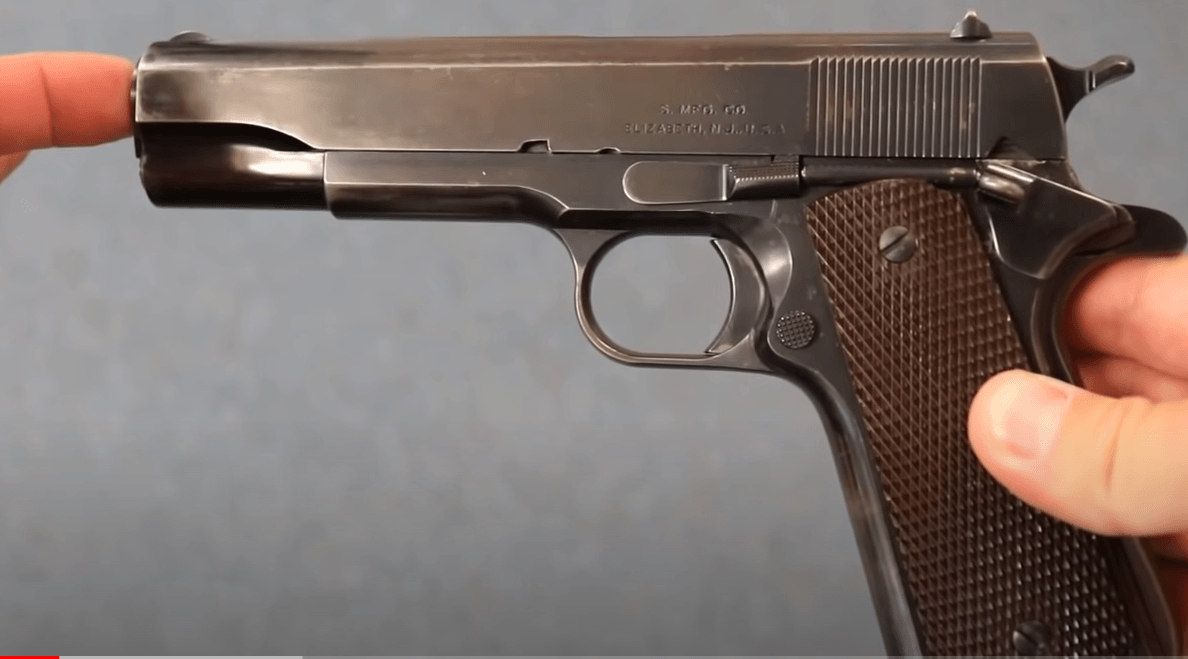
Now if you remember, it was over a year ago that we did a video actually on two and a half Singers. At the end, I'm going to give you the link to re-watch that video if you haven't seen it, but it has a quarter of a million views. So a lot of people were interested in the Singer. Most of you know it's one of the most rare and valuable 1911s. This is a 1911 A1; it's one of the rarest guns out there, and they easily sell for $100,000 - $200,000. So if you're going to buy one, you want to get it right.
Is it all Original or Not?
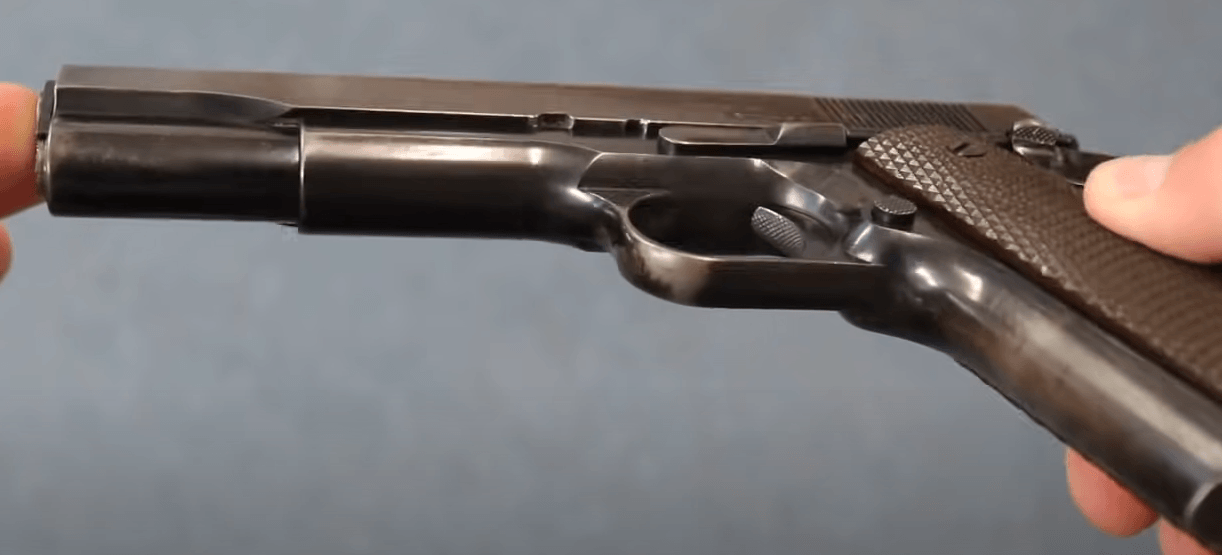
Now we're going to take this one all apart and check every single part to make sure it's all original and authentic. The serial number ends in 42, so this is the 42nd one made, and I'm up against a black shirt. So let me come up a little bit closer and give you some quick tells on whether or not this is an original Singer, or one that has been messed with.
Close up of the Finish
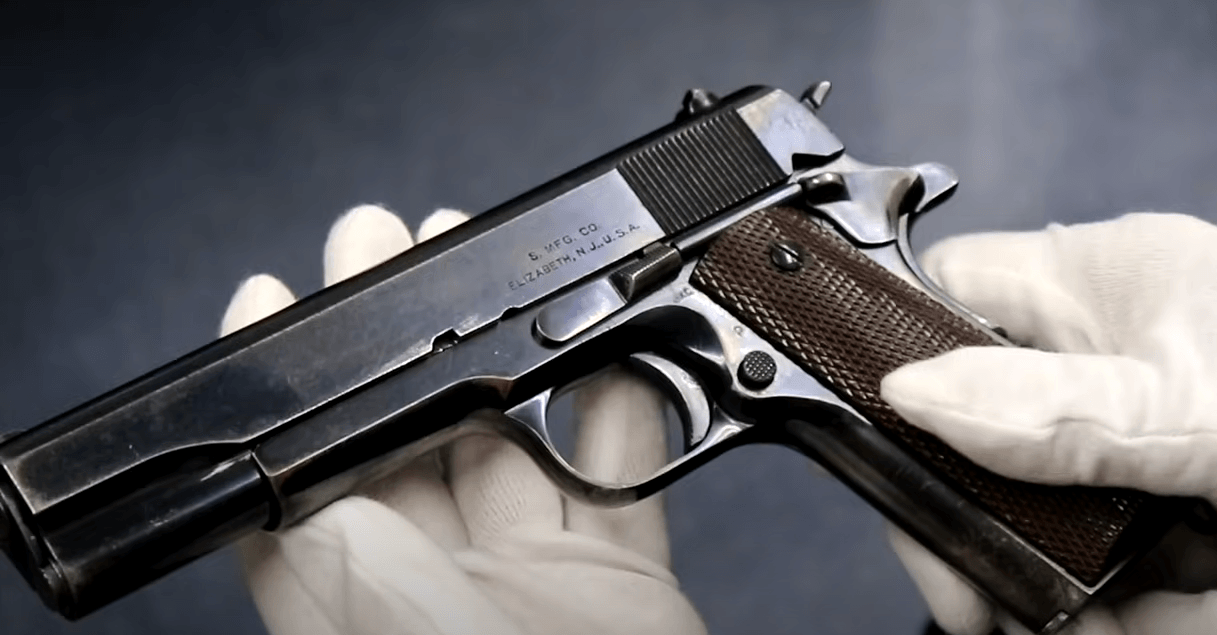
First and foremost, you can see this is the Singer Manufacturing Company, and that's how the logo looks. It's Elizabeth, New Jersey, not too far from us here in Philadelphia, that's North Jersey. And you can also see that its original finish. You do see that line that you see in the 1911 A1s; the line in the finish is just a little bit different where they dipped it in the blue. You also see some brown patina, which no question this is original finish. Also as you'll see, the finish on the Singer is somewhat unique to all of the other finishes - parkerized finished and brushed blue. So on a 1911 A1 the Singer made in about 1940 has a very unique finish. So that's something you want to watch for. But let me give you a couple other tells.
They do Fake these, so be Careful
Like if I'm following an auction and they say they have a singer, there's a couple things that I'm going to look at right away to tell whether or not it's worth my time to investigate it. They do fake these because at $100,000 you can get a really good one probably made up and sell on an auction to distance yourself from it and make a lot of money.
The Obvious Features of the Singer
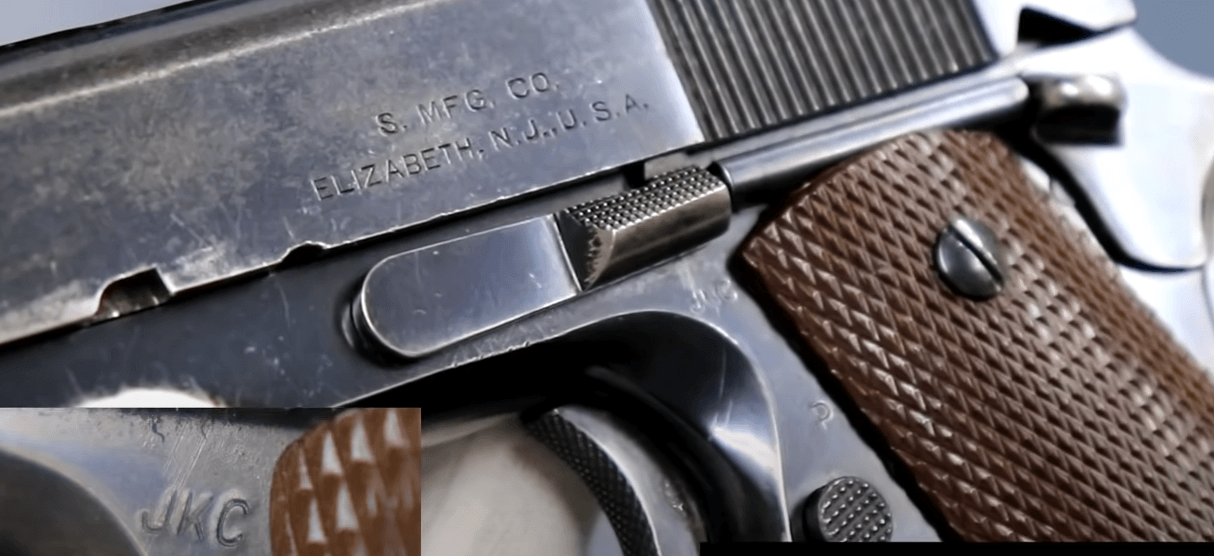
So first and foremost is the logo, the factory logo, you want to take a look at that and make sure it looks like it was roll stamped and not engraved. Also, the inspector mark is unique. It's JKC which is John K. Clement, and that would be unique. So a Singer will always have that. Those are obvious details, but I'm going to give you a couple other clues that are unique to Singer. Next, the serial number, it's the only one that the serial number begins with an S that's not a five but that is an S. And then it'll be 800 and then the serial number. Serial numbers will go from 1-500, they only made 500 of them. So they go from 1-500 and as I mentioned, this is serial number 42.
The more Subtle Differences
As I said, those are the obvious things. So let me give you some subtle things that nobody ever taught you when you're in grammar school.
Singer vs Colt: The Frame
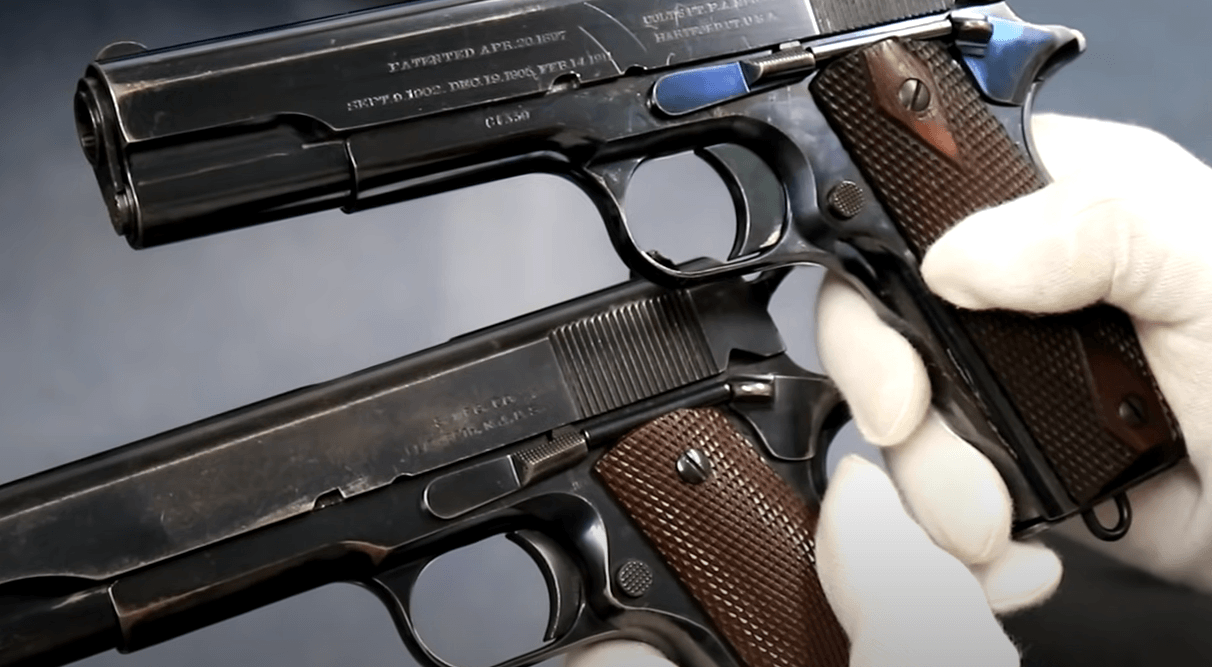
On the Singer, you will see the typical World War II, this is beveled on both sides, should be the frame is beveled. We'll call it the trigger finger rest. And if you're left handed, you'll see that same bevel. On an earlier Colt from World War I or before, this is pre-World War I, there is no bevel. So let's look at those side by side and look at the frame itself on the early guns that's actually the 1911 no bevel, on the 1911 A1 the modification in the frame is beveled.
Singer vs Colt: The Mainspring Housing
Now difference number two it will have the hump on the mainspring housing as opposed to the earlier gun flat versus the humped.
Singer vs Colt: The Finish
But now it gets even more subtle. Take a look at this. This is an early Colt 1911 and you can see it has a brushed blue finish. So you think okay, these are both blued but you see the difference between the Singer finish, especially on this end you can see more of the original. Right here you see a lot of the original polished blue versus a brushed blue. So that's an interesting difference that you'll notice in the finish. Ad always check the finish because of course they could be refinished and it's tough to duplicate that Singer finish.
Singer vs Colt: The Checkering
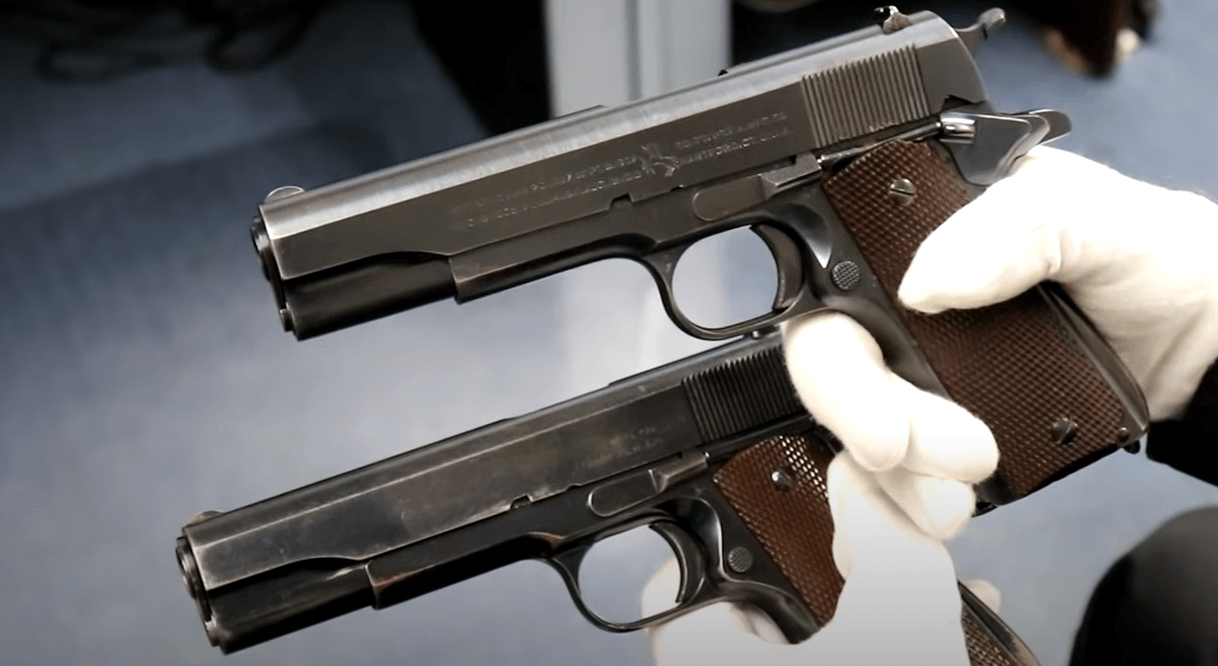
Now this one notice the beveled frame. You also then see the hump on the mainspring house. But let's look at the checkers, on the Singer the checkering is finer. So it's a fine checkering versus a coarser checkering. Also up under here and here, you can see the differences in the finish - brushed blue versus the Singer more of a high polished blue. So again, it's completely unique for the singer.
Singer vs Colt: The Line on the Frame
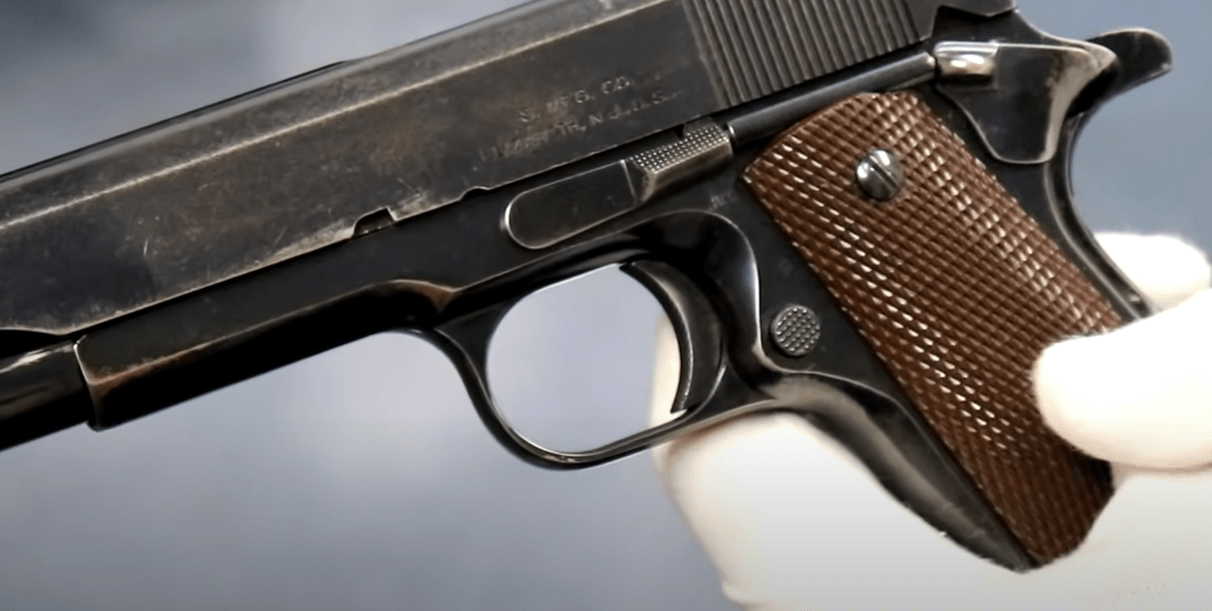
Now, here's one other very subtle difference that nobody ever taught you. Check this out. On the Singer frame, watch this line, well my finger will follow the line. This line on the frame is one continuous line. So you see almost like an S, one continuous line. So if somebody took a Colt frame, it would be beveled if it was an A1, of course you see RS, which is Robert Sears, but notice on this line there's kind of a point and point. It's not much of a point, it's very, very subtle, but it is a difference in the frame. So let's look at them again side by side.
We'll do a little bit of an angle, do you see the difference?
Here and here, you see a point in the line, whereas on the Singer it's one continuous line. So that's interesting, sometimes hard to spot, but I was actually looking at an auction and by the way, sometimes the frame is even a little more pointed than this, easier to see. But I did see a Singer for sale and it did not have this continuous line, it had the kind of the more of a pronounced pointed line, and then this continuous line. So I immediately knew that it had been a Colt frame that somebody tried to make into a Singer.
Singer vs Colt: The Slide
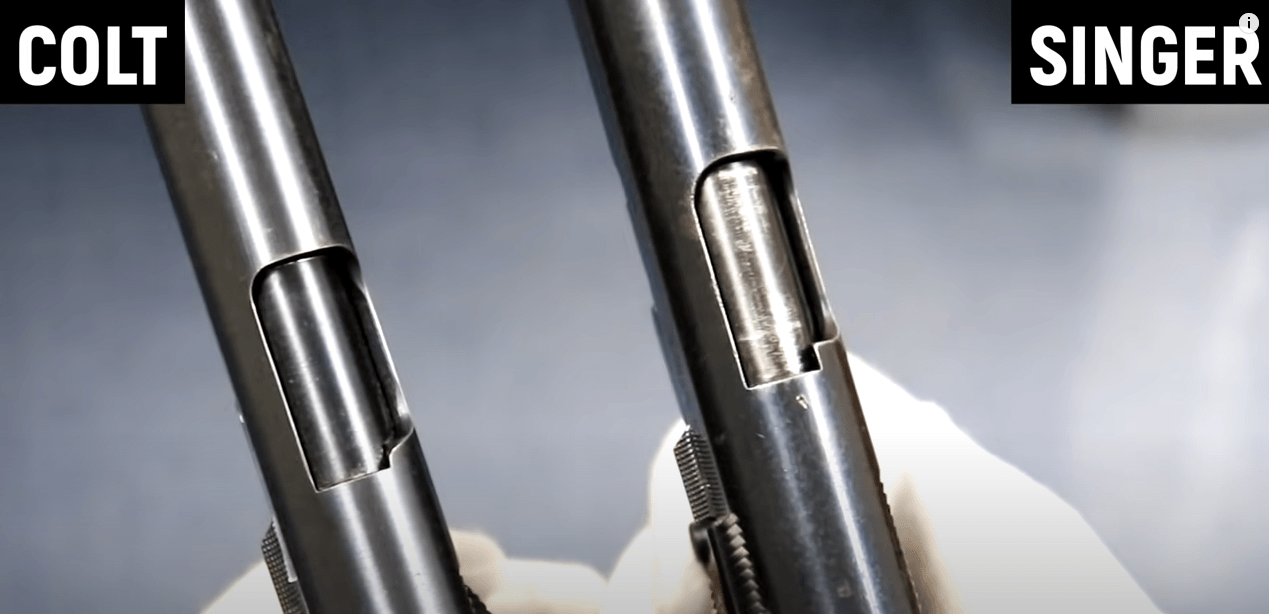
Now there's one other subtle difference that I want to show you and that is on the slide. Notice on the slide of the Singer right here, you see how that comes to a point? It almost is a 90 degree angle? Now look at the slide of the Colt at the same spot. Notice is not a 90 degree edge, but it's a slowly curved edge. So the Singer versus the Colt, the slide is different, and the frame is different. If somebody tries to fake those, you're going to be able to tell because you watched this video.
A Union Switch and Signal
Now let me make your life a little more complicated, because I'm going to now show you a Union Switch and Signal. So for all of the other 1911 A1s, they follow the Colt model which had the different slide, the different frame, then the Singer. However, on the Union Switch and Signal, I did read that Union Switch and Signal. When they got the contract to make the 1911 A1s, they got the blueprints from Singer who was no longer making them of course. So they bought the blueprints from Singer and you can verify that. I'm not an expert on Singers but I did read that online and this would actually be verified by the frame. Notice these two frames. First of all the Union Switch, the parkerized finish, it's actually a du-lite finish. That is very unique, nobody would be fooled by that finish. However, if you just borrowed the frame and the slide, let's take a look at these subtle differences.
US&S vs The Singer
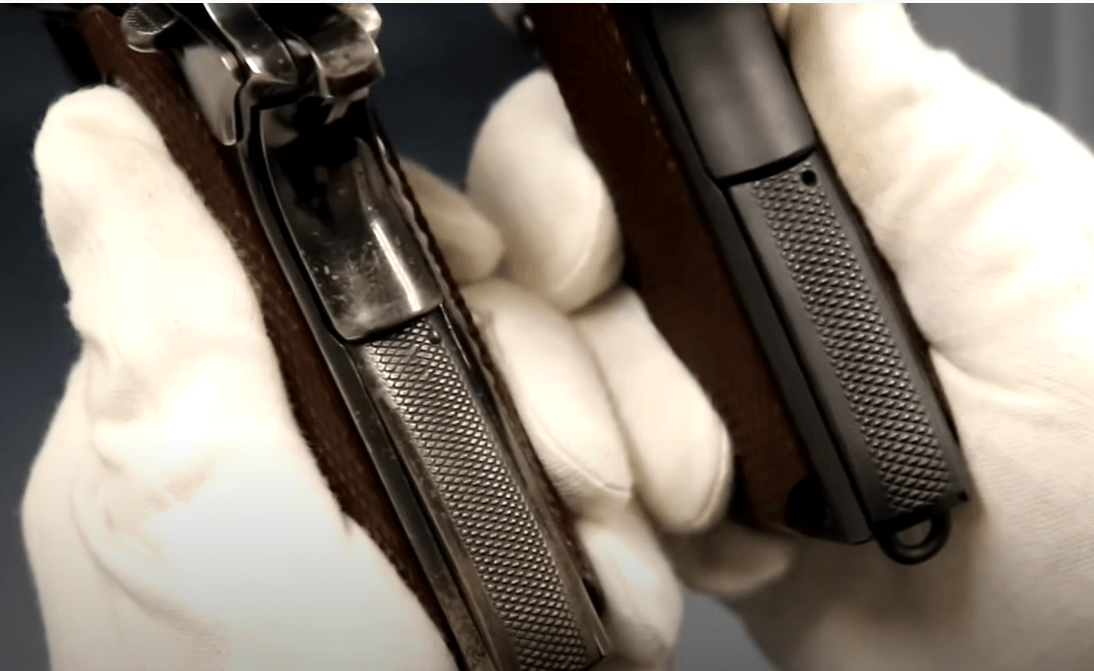
Remember the continuous line, I find the Union Switch and Signal to have a continuous line here. Secondly, I mentioned the finer checkering. It's slightly different, but the Union Switch and Signal is known as having a finer checkering. Let's compare it to the Colt real quickly. Union switch and signal is certainly finer than the Colt. And somebody who really wants to check these more carefully, this is a little bit finer but it does have the finer checkering. So that's tell number two, which would be hard to tell. And then finally take a look at this edge on the Singer versus the Union Switch and Signal. Again, it follows the design of the Singer which would lend credence to the theory that Union Switch and Signal used blueprints from the Singer factory.
One more thing! The firing proof
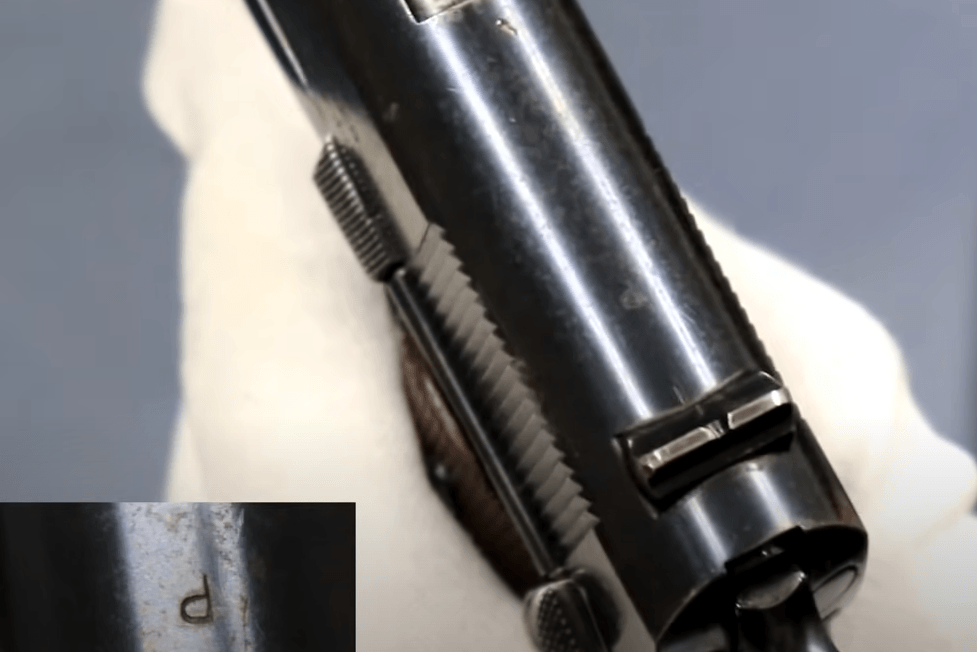
Before I leave and send you to my previous video, I just remembered one other thing. On the Singer, the P proof which is an inspector firing proof, the P is upside down on the Colt you can see the P is right side up. Now on the Union Switch and Signal by the way it can be here or a little bit on the side but they are right side up versus the Singer upside down. And that was done after the finish.
Be sure to check out the earlier Singer videos
So I just wanted to do a real quick overview, because let's face it 99.9% of you are never going to buy a Singer in your life. This is the first time we've ever offered one on our website, so we're actually kind of excited about offering it to all of you. It's on the website now if you want to check it out. But again, most of you are never going to buy one but it's a fun video to watch. And how could I let this go through my hands without showing it to you. But let me encourage you to go ahead and get more information about the Singers by going to our video right here on this link, you can go to the video about the Singer and it gives you a lot of the history of the gun, why they made them and why they stopped making them. So check it out.
Many thanks
Thanks for watching. Make sure you like and subscribe to our channel.
